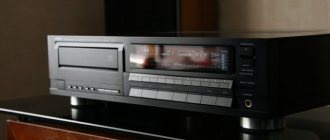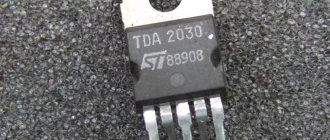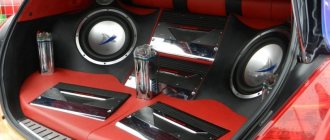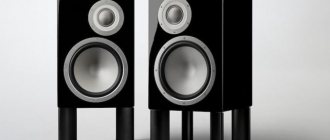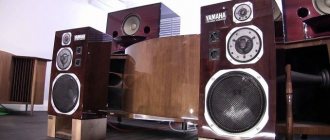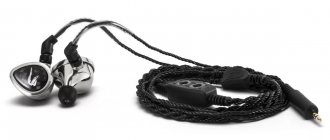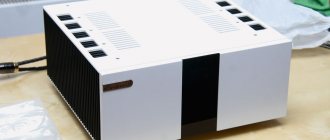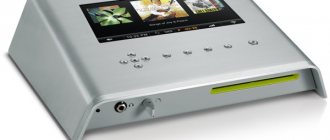Yamaha made an excellent amplifier, the respect for which becomes even greater when you find out its affordable price. Yamaha has long been considered a leader in the production of speakers and components for DC applications, but in recent years the Japanese have made a new offensive in the hi-i market. First, the Soavo series of speakers was released, and now the company has developed a series of integrated amplifiers and universal players.
Amplifier Yamaha A-S1000
PECULIARITIES
Yamaha has long been considered a leader in the production of speakers and components for DC applications, but in recent years the Japanese have made a new offensive in the hi-i market. First, the Soavo series of speakers was released, and now the company has developed a series of integrated amplifiers and universal players.
The “hero” of the review inherited the design principles, output stage, power supply and phono section from the flagship of the line of new Yamaha amplifiers, the A-S2000 model. The amplifier circuits are built using the patented Floating Point Power Amplifier technology, which uses a fully balanced circuit and constant voltage power supplies, decoupled from a common ground. The positive and negative parts of the signal of one channel, along with the power taps and negative feedback circuits, are isolated from each other. The engineers abandoned the push-pull principle and used transistors of the same polarity in the final stage, which made it possible to further symmetrize the circuit. The power supply contains a large transformer with an W-shaped core and four capacitors of 18 thousand uF each, in four taps the voltage is equalized by 12 parallel stabilizers. The switchable phono preamplifier (MM/MS) cartridge and telephone amplifier are mounted separately from the rest of the circuit.
Even the timbre block and channel balance units are made in a special way in the A-S1000. Instead of sequential connection of microcircuits and the presence of a button that shortens the signal path bypassing the controllers, the Japanese connected all controllers in the circuit in parallel, reducing noise.
The rear panel houses 6 line inputs, including a phono input with a cartridge type switch, a preamp output and a recording output. Two sets of large gold-plated speaker terminals are originally located diagonally.
Selling a top class amplifier - Yamaha A-1000. Amazing sounding device. The best creation of Yamaha in the category of ultimate sound in 1984 along with the A-2000. Amplifier from Japan, 100 volts. If necessary, I will supply you with a 220V transformer! +4tr Collectible condition!! Both technically and cosmetics! We type on YouTube in the search bar Yamaha A-1000, watch, listen. Technical data: Year of manufacture: 1984 Power: 140W + 140W (4 Ohm, 0.005%), 100W + 100W (8 Ohm, 0.003%), Frequency range: 10-100,000 Hertz THD: 0.003% Signal/noise: 124 db Weight: 16.5 kg. Inputs: Phono (MM/MC), AUX, etc. Headphone output. Made in Japan The Yamaha A-1000 was Yamaha's top of the line amplifier in 1984, along with the A-2000 which was released the year before. At that time, the CA series, which included the CA-2000 device, was replaced by a line of amplifiers A with an even more advanced and refined sound, aimed not only at a vinyl player, but also with an emphasis on high-quality CD playback (the shortest signal path is ensured, etc.) and new expensive design - varnished wood, rich metal. You can also see that the proposed Yamaha A-1000 is made even more impressive than the previously released Yamaha CA-2000; just look at the thin network cable on the 2000 and the half-length harness on the 1000 model. The company used Yamaha's excellent natural sound system in the Yamaha A-1000 amplifier - the ZDR circuit and double class A. The inscription on the luxurious, expensive aluminum front Natural Sound corresponds to the sound of this particular model, on lower models - this is an advertisement! In the amplifier, the Richness function deserves special attention, saturating the sound of music with incredible audiophile richness - the pipes and saxophone crumble into many sounds shimmering with each other, creating delight. The amplifier circuitry offers incredible linearity and sonic precision, utilizing a wealth of know-how. Only the capacitance of the capacitors used reaches 146,000 microfarads! The Dual Class A circuit is a copy of the Model B-2x and A-2000 amplifier circuit. The amplifier also has pre-configured settings, allowing you to use a switch to select the ideal frequency response for Yamaha NS-1000 speakers, Yamaha NS-2000 speakers and others. There is a Direct mode. Gold-plated phono connectors, a thick network cable made of oxygen-free copper, 124 dB and other points leave no questions about the class of this device. The sound is soft with a lot of air! The bass is elastic, collected, fast, like the sound of an old leather drum. The sound resolution is incredible, it shows a huge number of nuances that are inaccessible to modern amplifiers in a +100tr budget! Listening to the device is an incredible pleasure. Additional photos, videos upon request! See my other lots: Analog Sound Vintage Retro Sound Collectible condition! Full set ! I will send it to the regions in secure packaging!Add a review
SOUND
The amplifier produces sound with luxurious dynamics, but compared to devices from previous lines, improvements are noticeable in handling subtle matters of the timbre palette. The structure of timbres is transmitted without rudeness, clearly and purely. The low-frequency foundation of sound is reproduced with depth and density, with excellent attack and amplitude. During dynamic bass bursts, the amplifier's extraordinary power reserve is especially well felt. At the same time, the low-frequency “voices” of instruments sound textured, all transient processes are processed clearly and quickly. The extended top is airy and quite bright, the trains of cymbals and openwork percussion are highlighted in all details, but at the same time they do not obscure the rest of the score with their brilliance. The midrange at a moderate volume is presented quite neutrally; as the sound level increases, you can notice a slight dryness in the timbres of the woodwinds, and sharp notes slip through in the voices of the strings and jazz “brass,” but these are all minor flaws.
The A-S1000's stereo image is slightly forward, but moved as a whole, and the rear layers of the stage are also close and clearly visible. The solo instruments look enlarged, but this only increases the effectiveness of the sound, and it never reaches the point of grotesque hyper-scale. If anything breaks the ideality of the composition, it is the slightly increased size of the bass group instruments, which the amplifier sometimes brings from the back echelons of the stage to the foreground.
Price: 38,000 rubles.
A Bow Technologies ZZ-8 CD player was used as a signal source. The amplifier significantly reduces the source signal level in the HF, and slightly in the bass. The amplifier's frequency response in the bass begins to decline from 50-60 Hz (–0.3 dB at 20 Hz), in the HF from -5 kHz (–0.6 dB at 20 kHz). The harmonic distortion (THD) of the amplifier at a frequency of 1 kHz does not exceed 0.035%, (THD of the source is 0.008%). The amplifier practically does not change the levels of harmonics above the third, it even smoothes them out a little throughout the entire frequency range. The entire influence of the amplifier on the signal comes down to highlighting the third harmonic throughout the entire range, so that it becomes maximum in THD, as well as to some increase in the second harmonic in HF.
Yamaha XP1000 power amplifier
Yamaha XP1000
- is a high-quality power amplifier 2 x 250 W XP series, made using unique EEEngine technology. This model is perfect for both stationary and mobile events in small and medium-sized halls. What makes all XP Series amplifiers unique is that they are made from environmentally friendly, lead-free components. Like other advanced models, it is capable of operating in two-channel stereo and bridged mono modes. It also provides several degrees of protection and an intelligent cooling system with low-noise fans. An additional advantage is its compact dimensions and low weight, which in no way affect its power and significantly simplify transportation.
Yamaha XP1000
It is housed in a reliable rack-mounted metal case, which can be easily mounted in a 19′ rack and occupies 2 units. Audio input is via two balanced XLR connectors or a 6-pin Euroblock port. Outputs to speaker systems are made on two traditional Speakon connectors, as well as on four marked screw terminals. Additionally, the amplifier is equipped with a special Monitor/Remote port, thanks to which remote monitoring of the protection system is carried out, as well as control of some functions. Plus, on the rear panel there are several toggle switches for switching operating modes, sensitivity levels and frequency filters.
Five models ranging from 700 to 100 W
The XP Series includes 5 models ranging from 700 W (stereo, 8 ohms) to 100 W (stereo, 8 ohms). That is, you can choose a model that fully meets the power requirements of your audio equipment. Additional flexibility is provided by three operating modes: stereo with two independent channels; parallel (dual mono), allowing you to transmit a mono signal over two channels to two speaker systems; and bridge mode, when two channels working together produce maximum power. XP Series amplifiers are environmentally friendly because they contain lead-free components.
Careful selection of parts and design for high quality sound
XP Series amplifiers deliver sound quality comparable to top-of-the-line models through painstaking circuit design and careful component selection. These amplifiers use vibration dampers inherited from the PC-1N series. The result is tight lows, clear mids, and crisp highs. XP amplifiers provide incredible speech and vocal clarity.
The perfect pairing of power and cost
The most effective combination of optimal circuit design and efficient parts has resulted in an amplifier with incredible performance and low cost. You can shop around, but you're unlikely to find these types of features on amps in this price range.
Lightweight amplifiers with 2U design
Thanks to EEEngine technology and Yamaha's many innovations, the XP Series amplifiers have been able to fit into a compact 2U package that hides their power and sound quality. They are also very lightweight, making them an ideal choice for mobile and fixed sound systems for live performances.
Connectors and features for a wide range of applications
The XP Series features a range of input and output connectors that allow them to be used in professional audio systems: XLR and Euroblock input connectors, as well as Speakon output connectors and five-wire terminals. The XP7000 can be used to power 70V (stereo) lines, while the XP3500 is compatible with 100V (bridged) high impedance speaker lines. The XP Series is an ideal choice for medium-sized venues such as churches, concert and banquet halls, conference rooms and restaurants. In addition, XP series amplifiers can also be used for exhibitions, holidays and concerts.
The ideal companion for the DME64N and DME24N digital mixing systems and Installation Series speakers
If you are building or planning a sound system using DME64N and DME24N digital mixing systems and Installation Series speakers, XP Series amplifiers are the ideal choice for you.
Exclusive Yamaha EEEngine technology
Advanced mode switching and Yamaha's original EEEngine technology make the XP Series amplifiers incredibly efficient. The mode switch sets the most optimal output voltage and current in terms of output, and the use of EEEngine (load-dependent energy management) technology further reduces power consumption without compromising sound quality. In fact, power consumption is reduced by 50% compared to traditional Class AB amplifiers, while maintaining the same high level of sound quality typical of this class of amplifiers. Increased efficiency also results in reduced heat generation, longer component life, reduced weight, smaller size and improved reliability.
Remote monitoring and control
XP series amplifiers are equipped with a Monitor/Remote output for connecting an external device, from which the status of protective circuits and output levels can be monitored, as well as remote control of muting and standby functions.
Effective protection circuits, indicators and variable speed fans
Protection circuits include amplifier power-on shutdown, output protection, and DC current detection. Indicators clearly display the status of protective systems and other parameters: the PROTECTION indicator indicates the activation of the protection circuit, TEMP indicates heatsink overheating, POWER/STANDBY indicates the power status of the device, and SIGNAL and CLIP indicate the signal level and overload of each channel. Low-noise, variable-speed fans effectively cool the amplifier and ensure stable operation.
Music in pure class “A” or Yamaha CA-1000 III
We are all looking for new pleasant experiences, some in books, some in travel, and some in music.
A previously unknown album by an ensemble or some audio component arouses curiosity. Driven by similar desires, I assigned a 1979 Yamaha CA-1000 III to the role of my amplifier. I already talked about it recently, but the listening was not as meticulous as it becomes possible when the device forms the core of the current actual audio path. The entire system turned out to be in the following configuration: amplifier Yamaha CA-1000 III in pure class A CD player Yamaha CDX-1020 (2xPCM58) Speaker systems JBL 4312B MK II Control Monitor In general, the impressions began to take shape little by little. Even when I turned it on for the first time, I noted that the device produces very clear sound with decent detail. But when switching from class A to A/B, I could not clearly notice the changes. But now the amplifier was working in my system, and after working for more than an hour after switching on in pure class A, I again turned to the topic - how relevant is the switch from class A to AB. And you know - indeed, when you switch the device, there seems to be no difference, the sound of the instruments seems to have not changed, but in fact, it is not so easy to notice in the first second, since the ears need to be able to appreciate the changes over time. And these changes exist, not in the nature of the sound of the instruments - this remains unchanged, but the atmosphere of the room becomes audible in class A - namely, certain spatial changes that affirm the reality of the sound event, and not a copy-imitation. As Yamaha itself has stated, class A is for sophisticated connoisseurs of natural sound, and the position of the AB switch is for those moments when power is important, not quality - in general, dancing. From this I advise you to listen to the Yamaha CA-1000 III in pure class A. But what about the sound, how I was able to feel and appreciate it. The class of sound was initially clear to me - this is a very high level; it differs from the flagship CA-2000 only by less control over the lowest register. Yamaha CA-1000 III
But I listened, listened to the amplifier, and started with the Pink Floyd album “Delicate Sound of Thubder.” To be honest, this was once my favorite album, but now, after jazz, after classical, it is perceived as somewhat primitive. Some songs are more Clash-style punk rock than art/progressive rock (at least in this live performance). But I like this deliberately careless vocal, the desire to show emotions, and the recording quality of the album, despite the fact that it is a recording of a live concert, is amazing.
And while listening to the album for an hour, the first thing my ears made me pay attention to was the sound of the cymbals. He was incredibly cool. The cymbals were so naturally iron-clad, sonorous, but not crazy, but with phenomenal detail that I was simply blown away by the sound of the cymbals. In general, I gave up on metal transistors a long time ago - I listened to the first model of the Yamaha CA-1000 and Pioneer SA-9800, so that it would be clear to me that I personally am not interested in this. But the Yamaha CA-1000 III not only plays no worse than silicon transistors, but it also gives a head start in the unique presentation of cymbals.
Pioneer SA-9800
I thought, maybe it was a coincidence, it was evening, there was music that would be a blast even if I didn’t turn it on, so I put on another disc - Pavarotti & friends. This is also a concert recording, which I considered unsuccessful, as I perceived it more as a music lover than an audiophile - for my taste the microphones were pulled too far into the hall. But the Yamaha CA-1000 III suddenly created a miracle - clear “audiophile” vocals, detail and again those wonderful tasty cymbals. The device had already played out in time by the 2nd hour of listening and I saw that the first impressions were not imaginary to me - this is a given of this model, but my ears now obligingly concentrated on what a delightful punch this amplifier produced. The biting punchy fast sound of the drums - the drums were phenomenally cool to listen to - listening to them was akin to experiencing some kind of adventure - a wealth of sounds, bitingness, speed. And I went crazy again. But the device did not even think of letting me out of its bonds. There are many performers on the Pavarotti & friends disc - tenor singers and creators of more down-to-earth music - delightful compositions by Sting and others. I was very pleased with the vocal performance of the Yamaha CA-1000 III amplifier. Very natural, natural - you listen and speak - yes, I believe that this is a natural real voice - it’s very cool. In addition, the device showed all the music at a very good audiophile level - I was really impressed.
Yamaha CDX-1020
So, what attracted me most was just the awesome sound of the cymbals, really cool vocals and masterpiece punch. In terms of vocals, a very decent CD player turned out to be a bit of a weak point, since the sound of the Yamaha CA-1000 III is for some reason of a real flagship level, and where the Denon DCD-1650AL CD player played flawlessly, the Yamaha CDX-1020 was slightly lacking in vocals. But the Yamaha CDX-1020 is a very cool device, I listen to it in my system and I more than like it, and its slightly lower class than the Denon DCD-1650AL is still good even for me (with persistent audiophile claims). But let’s return to the Yamaha CA-1000 III amplifier - after a full listening, I saw its very tasty sides that I had previously missed, I felt the charm of pure class A. I was also imbued with its external beauty, pleasant lighting, and arrows. Yes, I really liked it, I will listen to it.

